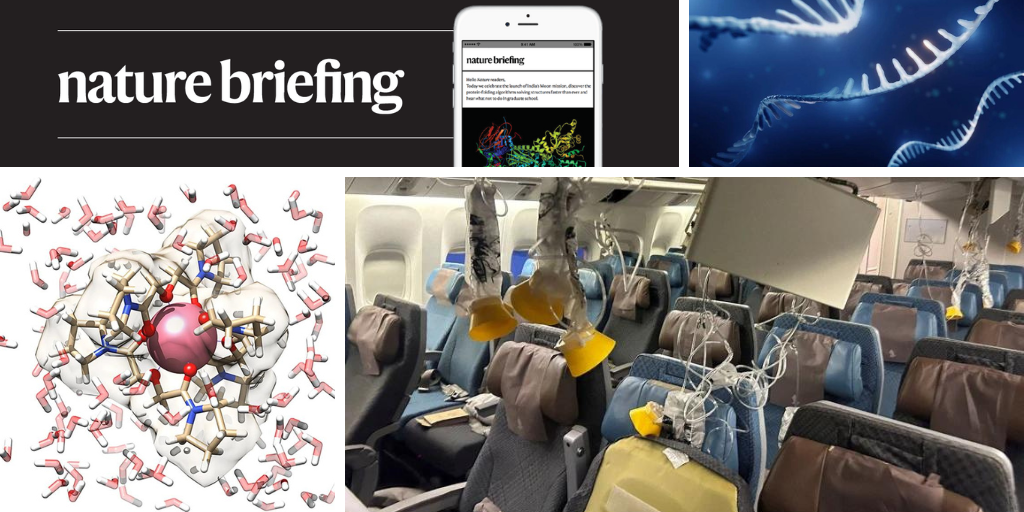Data reporting
No statistical methods were used to predetermine sample size. The experiments were not randomized and the investigators were not blinded to allocation during experiments and outcome assessment.
Generation of knock-in mouse lines
Driver and reporter mouse lines listed in Supplementary Table 1 were generated using a PCR-based cloning, as described before and below13,45. All experimental procedures were approved by the Institutional Animal Care and Use Committee (IACUC) of the Cold Spring Harbor Laboratory (CSHL) in accordance with NIH guidelines. Mouse knock-in driver lines are deposited at The Jackson Laboratory for wide distribution. Knock-in mouse lines were generated by inserting a 2A-CreER or 2A-Flp cassette in-frame before the STOP codon of the targeted gene. Targeting vectors were generated using a PCR-based cloning approach as described before. In brief, for each gene of interest, two partially overlapping BAC clones from the RPCI-23&24 library (made from C57BL/b mice) were chosen from the Mouse Genome Browser. The 5′ and 3′ homology arms were PCR-amplified (2–5 kb upstream and downstream, respectively) using the BAC DNA as template and cloned into a building vector to flank the 2A-CreERT2 or 2A-Flp expressing cassette as described47. These targeting vectors were purified and tested for integrity by enzyme restriction and PCR sequencing. Linearized targeting vectors were electroporated into a 129SVj/B6 hybrid embryonic stem (ES) cell line (v6.5). ES clones were first screened by PCR and then confirmed by Southern blotting using appropriate probes. DIG-labelled Southern probes were generated by PCR, subcloned and tested on wild-type genomic DNA to verify that they give clear and expected results. Positive v6.5 ES cell clones were used for tetraploid complementation to obtain male heterozygous mice following standard procedures. The F0 males were bred with reporter lines (Supplementary Tables 1, 3, 4) and induced with tamoxifen at the appropriate ages to characterize the resulting genetically targeted recombination patterns.
Tamoxifen induction
Tamoxifen (T5648, Sigma) was prepared by dissolving in corn oil (20 mg ml−1) and applying a sonication pulse for 60 s, followed by constant rotation overnight at 37 °C. Embryonic inductions for most knock-in lines were done in the Swiss-Webster background; inductions for Tis21–CreER, Fezf2–Flp intersection experiments were done in the C57BL6 background. E0.5 was established as noon on the day of vaginal plug and tamoxifen was administered to pregnant mothers by gavage at a dose varying from 2–100 mg kg−1 at the appropriate age. For embryonic collection (12–24 h pulse-chase experiments), a dose of 2mg kg−1 was administered to pregnant dams via oral gavage. For postnatal induction, a 100–200 mg kg−1 dose was administered by intraperitoneal injection at the appropriate age.
Immunohistochemistry
Postnatal and adult mice were anaesthetized (using Avertin) and intracardially perfused with saline followed by 4% paraformaldehyde (PFA) in 0.1 M PB. After overnight post-fixation at 4 °C, brains were rinsed three times and sectioned at a 50–75-µm thickness with a Leica 1000s vibratome. Embryonic brains were collected in PBS and fixed in 4% PFA for 4 h at room temperature, rinsed three times with PBS, dehydrated in 30% sucrose-PBS, frozen in OCT compound and cut by cryostat (Leica, CM3050S) in 20–50-µm coronal sections. Early postnatal pups were anaesthetized using cold shock on ice and intracardially perfused with 4% PFA in PBS. Post-fixation was performed similarly to older mice. Postnatal mice aged 1–2 months were anaesthetized using Avertin and intracardially perfused with saline followed by 4% PFA in PBS; brains were post-fixed in 4% PFA overnight at 4 °C and subsequently rinsed three times, embedded in 3% agarose-PBS and cut to a 50–100-μm thickness using a vibrating microtome (Leica, VT100S). Sections were placed in blocking solution containing 10% normal goat serum (NGS) and 0.1% Triton-X100 in PBS1X for 1 h, then incubated overnight at 4 °C with primary antibodies diluted in blocking solution. Sections were rinsed three times in PBS and incubated for 1 h at room temperature with corresponding secondary antibodies (1:500, Life Technologies). Sections were washed three times with PBS and incubated with DAPI for 5 min (1:5,000 in PBS, Life Technologies, 33342) to stain nuclei. Sections were dry-mounted on slides using Vectashield (Vector Labs, H1000) or Fluoromount (Sigma, F4680) mounting medium.
To perform molecular characterization of GeneX-CreER mouse lines, we stained 40-µm vibratome sections for CUX1 and CTIP2, that were imaged in a Nikon Eclipse 90i fluorescence microscope. Focusing on the somatosensory cortex, we counted tdTomato+ cells in a column of around 300-µm width and determined their relative position along the dorso-ventral axis that goes from the ventricular surface (0) to the pia (100%). As a reference, CTIP2+ and CUX1+ regions were plotted as green and blue bars, where the upper limits correspond to the mean relative position of the dorsal-most positive cells, and the lower limits correspond to the mean relative position of the ventral-most positive cells. Grey areas in histograms correspond to the s.d. of those limits. The frequency of tdTomato+ cells along the dorso-ventral axis was plotted in a histogram with a bin width of 5%. Number of cells: Fezf2–CreER, 2,781 cells; Tcerg1l–CreER, 185 cells; Adcyap1–CreER, 54 cells; Tle4–CreER, 2,737 cells; Lhx2–CreER, 1,380 cells; Plexind1–CreER, 809 cells; Cux1–CreER, 2,296 cells; Tbr1–CreER, 3,572 cells; Tbr2–CreER tamoxifen E16.5, 1,273 cells; Tbr2–CreER tamoxifen E17.5, 1,871 cells. For each line we quantified at least four sections from two embryos. Differences in cell numbers are due to differences in labelling density.
For colocalization determination, we obtained confocal z-stacks centred in layer 5 or 6 of the somatosensory cortex, of 320 × 320 × 40 µm3 volumes. For all tdTomato+ cells in the volume, we manually determined whether they were also positive for the desired markers by looking in individual z-planes. The percentage of positive cells was calculated for each area. Average number of tdTomato+ cells quantified per staining: Fezf2-CreER, 314 cells in layer 5 and 472 in layer 6; Tcerg1l-CreER, 162 cells; Adcyap-CreER, 20 cells; Tle4-CreER, 157 cells in layer 5 and 1,081 in layer 6; Lhx2-CreER, 294 cells; Plexind1–CreER, 468 cells in layers 4 and 5a; Cux1-CreER, 761 cells; Tbr1-CreER, 858 cells; Tbr2-CreER, 1,380 cells. For each line we quantified at least four sections from at least two embryos. Differences in cell numbers are due to differences in labelling density.
Antibodies
Anti-GFP (1:1,000, Aves, GFP-1020), anti-RFP (1:1,000, Rockland Pharmaceuticals, 600-401-379), anti-mCherry (1:500, OriGene AB0081-500), anti-mKATE2 for Brainbow 3.0 (a gift from D. Cai), anti-SATB2 (1:20, Abcam ab51502), anti-CTIP2 (1:100, Abcam 18465), anti-CUX1 (1:100, SantaCruz 13024), anti-LDB2 (1:200, Proteintech 118731-AP), anti-FOG2 (1:500, SantaCruz m-247), anti-LHX2 (1:250, Millipore-Sigma ABE1402) and anti-TLE4 (1:300, Santa Cruz sc-365406) were used.
Validation of PyN driver lines
ViewRNA tissue Assay (Thermo Fisher Scientific) fluorescent in situ hybridization (FISH) was carried out as per the manufacturer’s instructions on genetically identified PyNs expressing H2bGFP nuclear reporter (GeneX-CreER;LSL-H2bGFP) to validate the expression of PyN mRNA within Cre-recombinase dependent H2bGFP expressing cells in adult tissue (p24). Antibody validation with Cre-recombinase dependent reporter (GeneX-CreER;Ai14) was also used as it was available for use in adult tissue. For both FISH and antibody validation experiments, the percentage of total recombinase-dependent reporter-positive cells co-expressing PyN driver transcript or antibody was quantified.
Viral injection and analysis
Stereotaxic viral injection
Adult mice were anaesthetized by inhalation of 2% isofluorane delivered with a constant air flow (0.4 l min−1). Ketoprofen (5 mg kg−1) and dexamethasone (0.5 mg kg−1) were administered subcutaneously as preemptive analgesia and to prevent brain oedema, respectively, before surgery, and lidocaine (2–4 mg kg−1) was applied intra-incisionally. Mice were mounted in a stereotaxic headframe (Kopf Instruments, 940 series or Leica Biosystems, Angle Two). Stereotactic coordinates were identified (Supplementary Table 5). An incision was made over the scalp, a small burr hole drilled in the skull and brain surface exposed. Injections were performed according to the strategies delineated in Supplementary Table 5. A pulled glass pipette tip of 20–30 μm containing the viral suspension was lowered into the brain; a 300–400 nl volume was delivered at a rate of 30 nl min−1 using a Picospritzer (General Valve Corp); the pipette remained in place for 10 min preventing backflow, prior to retraction, after which the incision was closed with 5/0 nylon suture thread (Ethilon Nylon Suture, Ethicon) or Tissueglue (3M Vetbond), and mice were kept warm on a heating pad until complete recovery.
Systemic AAV injection
Foxp2-IRES-Cre mice were injected through the lateral tail vein at 4 weeks of age with a 100 µl total volume of AAV9-CAG-DIO-EGFP (UNC Viral Core) diluted in PBS (5 × 1011 vg per mouse). Three weeks after injection, mice were transcardially perfused with 0.9% saline, followed by ice-cold 4% PFA in PBS, and processed for serial two-photon (STP) tomography.
Viruses
AAVs serotype 8, 9, DJ PHP.eB or rAAV2-retro (retroAAV) packaged by commercial vector core facilities (UNC Vector Core, ETH Zurich, Biohippo, Penn, Addgene) were used as listed in Supplementary Table 5. In brief, for cell-type-specific anterograde tracing, we used either Cre- or Flp-dependent or tTA-activated AAVs combined with the appropriate reporter mouse lines28 (Supplementary Table 7), or dual-tTA (Fig. 4 and Extended Data Fig. 10) to express EGFP, EYFP or mRuby2 in labelled axons. retroAAV-Flp was used to infect axons at their terminals46 in target brain structures to label PyNs retrogradely according to the experiments detailed in Supplementary Table 5.
Microscopy and image analysis
Imaging was performed using Zeiss LSM 780 or 710 confocal microscopes, Nikon Eclipse 90i or Zeiss Axioimager M2 fluorescence microscopes, or whole-brain STP tomography (detailed below). Imaging from serially mounted sections was performed on a Zeiss LSM 780 or 710 confocal microscope (CSHL St. Giles Advanced Microscopy Center) and Nikon Eclipse 90i fluorescence microscope, using objectives ×63 and ×5 for embryonic tissue, and ×20 for adult tissue, as well as ×5 on a Zeiss Axioimager M2 System equipped with MBF Neurolucida Software (MBF). Quantification and image analysis was performed using Image J/FIJI software. Statistics and plotting of graphs were done using GraphPad Prism 7 and Microsoft Excel 2010.
Twenty-four-hour pulse-chase embryonic experiments
For 24-hour pulse-chase embryonic experiments (Fig. 1, Extended Data Fig. 1), high-magnification insets are not maximum intensity projections. To observe the morphology of RGs, only a few sections from the z-plane in low-magnification images have been projected in the high-magnification images.
Quantification and statistics related to progenitor fate-mapping
Quantification for top panels in Fig. 1h, Extended Data Fig. 2m–o (n = 5–6 from two litters): mean values, number of progenitors ± s.e.m. *P < 0.05 (compared with bin M, RGsLhx2+), #P < 0.05 (compared with bin M, RGsFezf2+), one-way ANOVA, Tukey’s post-hoc test. †P < 0.05 (compared with RGsLhx2+ for corresponding bins), unpaired Student’s t-test. Quantification for bottom panels in Fig. 1h, Extended Data Fig. 2m–o (n = 3 from two litters): mean values for percentage total PyNs (S1) ± s.e.m. *P < 0.05 (compared with PyNsLhx2+). Quantification for Fig. 1k, Extended Data Fig 2t: top panel: (n = 3 from two litters): mean values, number of progenitors ± s.e.m. *P < 0.0001 (compared with RGsLhx2+Fezf2−), unpaired Student’s t-test. Bottom panel (n = 3 from two litters): mean values, number of progenitors ± s.e.m. *P < 0.05 (compared with rostral RGsLhx2+Fezf2−), #P < 0.05 (compared with rostral RGsLhx2+Fezf2+), one-way ANOVA, Tukey’s post-hoc test. †P < 0.05 (compared with RGsLhx2+/Fezf2− for corresponding regions), unpaired Student’s t-test.
Target-specific cell depth measurement
Cell depth analysis for retrogradely labelled projection-specific genetically identified PyNs (GeneX-CreER) were obtained using 5× MBF fluorescent widefield images of 65-µm thick coronal sections in MO and SSp-bfd. MO cell depths are presented in micrometres owing to the absence of a defined white matter border in frontal cortical areas and SSp-bfd depth ratio measurements were normalized to the distance from pia to white matter. For each condition we quantified at least four sections taken from two mice.
Whole-brain STP tomography and image analysis
Perfused and post-fixed brains from adult mice were embedded in oxidized agarose and imaged with TissueCyte 1000 (Tissuevision) as described48,49. We used the whole-brain STP tomography pipeline previously described48,49. Perfused and post-fixed brains from adult mice, prepared as described above, were embedded in 4% oxidized-agarose in 0.05 M PB, cross-linked in 0.2% sodium borohydrate solution (in 0.05 M sodium borate buffer, pH 9.0–9.5).The entire brain was imaged in coronal sections with a 20× Olympus XLUMPLFLN20XW lens (NA 1.0) on a TissueCyte 1000 (Tissuevision) with a Chameleon Ultrafast-2 Ti:Sapphire laser (Coherent). EGFP/EYFP or tdTomato signals were excited at 910 nm or 920 nm, respectively. Whole-brain image sets were acquired as series of 12 (x) × 16 (y) tiles with 1 μm × 1 μm sampling for 230–270 z sections with a 50-μm z-step size. Images were collected by two PMTs (PMT, Hamamatsu, R3896), for signal and autofluorescent background, using a 560-nm dichroic mirror (Chroma, T560LPXR) and band-pass filters (Semrock FF01-680/SP-25). The image tiles were corrected to remove illumination artifacts along the edges and stitched as a grid sequence47,49. Image processing was completed using ImageJ/FIJI and Adobe/Photoshop software with linear level and nonlinear curve adjustments applied only to entire images.
Cell body detection from whole-brain STP data
PyN somata were automatically detected from cell-type specific reporter lines (R26-LSL-GFP or Ai14) by a convolutional network trained as described previously48. Detected PyN soma coordinates were overlaid on a mask for cortical depth, as described48.
Axon detection from whole-brain STP data
For axon projection mapping, PyN axon signal based on cell-type-specific viral expression of EGFP or EYFP was filtered by applying a square root transformation, histogram matching to the original image, and median and Gaussian filtering using Fiji/ImageJ software50 so as to maximize signal detection while minimizing background auto-fluorescence, as described before51. A normalized subtraction of the autofluorescent background channel was applied and the resulting thresholded images were converted to binary maps. Three-dimensional rendering was performed on the basis of binarized axon projections and surfaces were determined based on the binary images using Imaris software (Bitplane). Projections were quantified as the fraction of pixels in each brain structure relative to each whole projection.
Axon projection cartoon diagrams from whole-brain STP data
To generate cartoons of axon projections for a given driver line, axon detection outputs from all individual experiments were compared (sorting the values from high to low), and analysed side-by-side with low-resolution image stacks (and the CCFv3 registered to the low-resolution dataset for brain area definition) to get a general picture of the injection, as well as high-resolution images for specific brain areas.
Registration of whole-brain STP image datasets
Registration of brain-wide datasets to the Allen reference Common Coordinate Framework (CCF) version 3 was performed by 3D affine registration followed by a 3D B-spline registration using Elastix software52, according to established parameters52. For cortical depth and axon projection analysis, we registered the CCFv3 to each dataset so as to report cells detected and pixels from axon segmentation in each brain structure without warping the imaging channel.
In vitro electrophysiology
Brain slice preparation
Mice (>P30) were anaesthetized with isoflurane, decapitated, brains dissected out and rapidly immersed in ice-cold, oxygenated, artificial cerebrospinal fluid (section ACSF: 110 mM choline-Cl, 2.5 mM KCl, 4 mM MgSO4, 1 mM CaCl2, 1.25 mM NaH2PO4, 26 mM NaHCO3, 11 mM d-glucose, 10 mM Na ascorbate, 3.1 Na pyruvate, pH 7.35, 300 mOsm) for 1 min. Coronal cortical slices containing somatomotor cortex were sectioned at a 300-µm thickness using a vibratome (HM 650 V; Microm) at 1–2 °C and incubated with oxygenated ACSF (working ACSF; 124 mM NaCl, 2.5 mM KCl, 2 mM MgSO4, 2 mM CaCl2, 1.25 mM NaH2PO4, 26 mM NaHCO3, 11 mM d-glucose, pH 7.35, 300 mOsm) at 34 °C for 30 min, and subsequently transferred to ACSF at room temperature (25 °C) for more than 30 min before use. Whole-cell patch recordings were directed to the somatosensory and motor cortex, and the subcortical whiter matter and corpus callosum served as primary landmarks according to the atlas (Paxinos and Watson Mouse Brain in Stereotaxic Coordinates, 3rd edition).
Patch-clamp recording in brain slices
Patch pipettes were pulled from borosilicate glass capillaries with filament (1.2 mm outer diameter and 0.69 mm inner diameter; Warner Instruments) with a resistance of 3–6 MΩ. The pipette recording solution consisted of 130 mM potassium gluconate, 15 mM KCl, 10 mM sodium phosphocreatine, 10 mM HEPES, 4 mM ATP·Mg, 0.3 mM GTP and 0.3 mM EGTA (pH 7.3 adjusted with KOH, 300 mOsm). Dual or triple whole-cell recordings from tdTomato+ and EGFP+ PyNs were made with Axopatch 700B amplifiers (Molecular Devices) using an upright microscope (Olympus, BX51) equipped with infrared-differential interference contrast optics (IR-DIC) and a fluorescence excitation source. Both IR-DIC and fluorescence images were captured with a digital camera (Microfire, Optronics). All recordings were performed at 33–34 °C with the chamber perfused with oxygenated working ACSF.
Recordings were made with two MultiClamp 700B amplifiers (Molecular Devices). The membrane potential was maintained at −75 mV in the voltage clamping mode and zero holding current in the current clamping mode, without the correction of junction potential. Signals were recorded and filtered at 2 kHz, digitalized at 20 kHz (DIGIDATA 1322A, Molecular Devices) and further analysed using the pClamp 10.3 software (Molecular Devices) for intrinsic properties.
Reporting summary
Further information on research design is available in the Nature Research Reporting Summary linked to this paper.







More News
Daily briefing: The body odours that make mosquitoes want to bite you
Daily briefing: Why climate change is making flights rougher
How researchers in remote regions handle the isolation